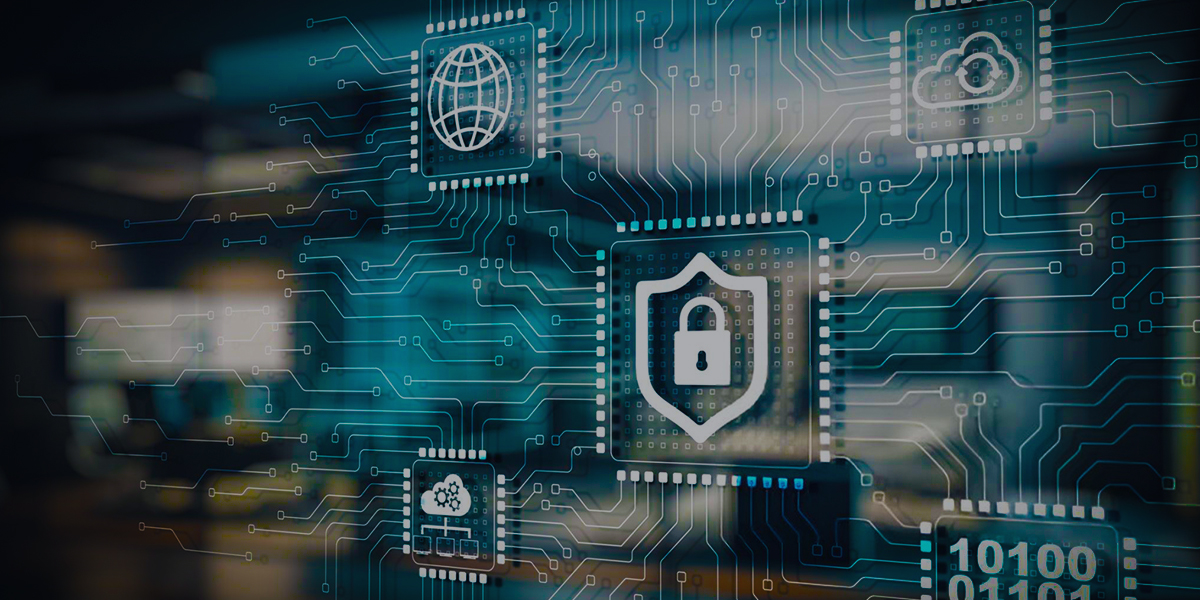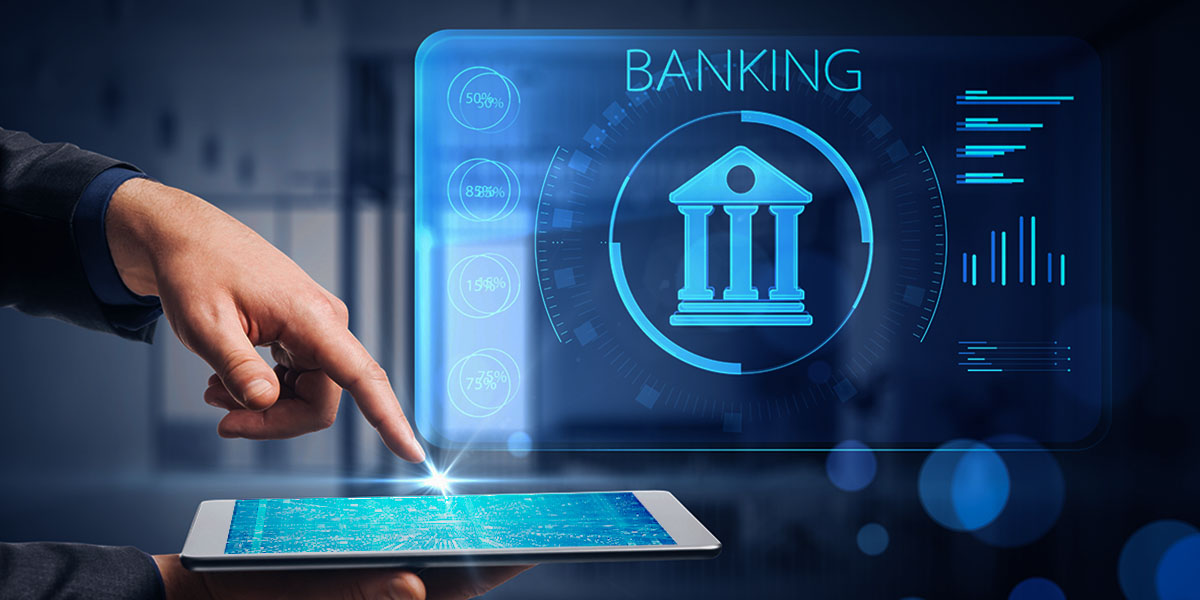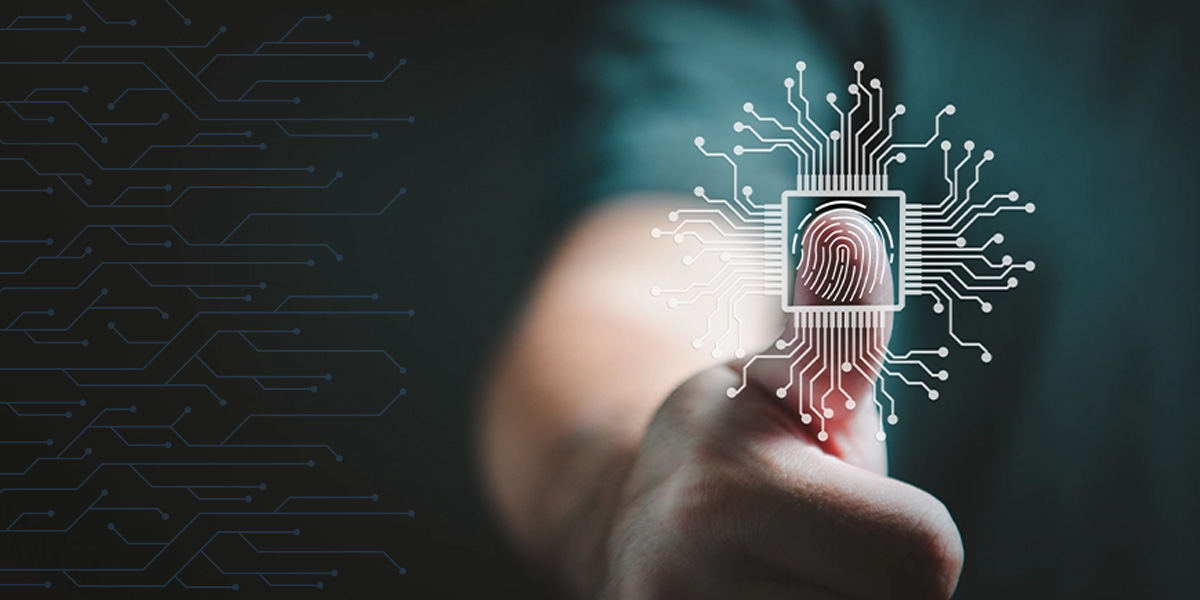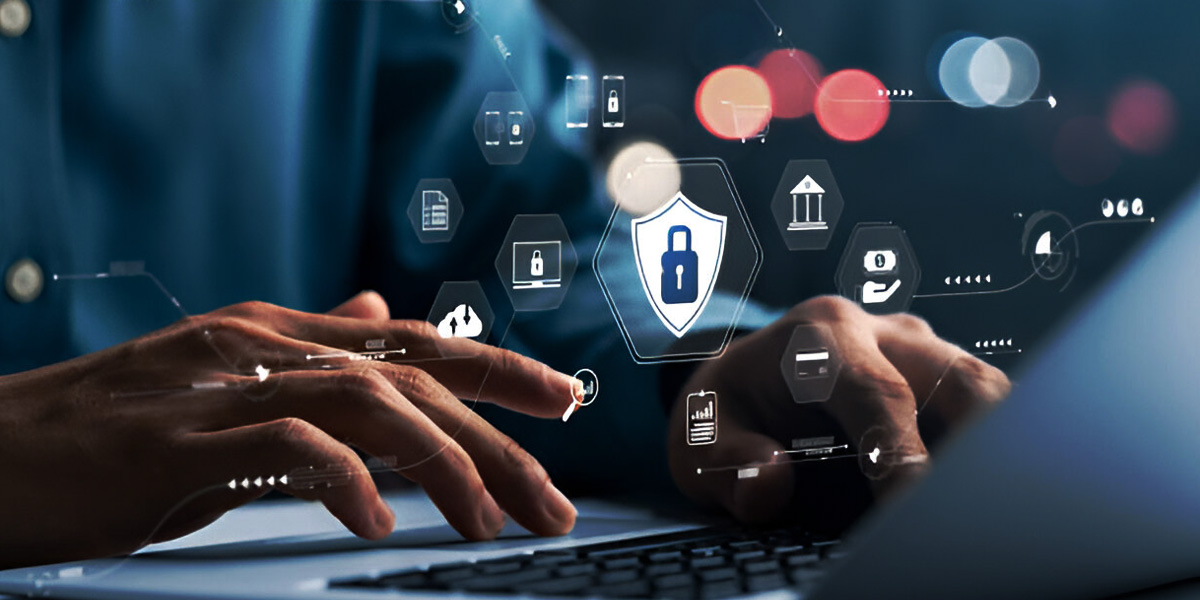Category: Uncategorized

Demystifying SEBI’s Cybersecurity and Cyber Resilience Framework (CSCRF) for Regulated Entities
In an era when digital threats are growing in frequency and sophistication, cybersecurity is no longer a luxury—it’s a necessity. The stakes are even higher for India’s financial sector, where data sensitivity and transaction volumes are exceptionally high.
The Securities and Exchange Board of India (SEBI) rolled out the Cybersecurity and Cyber Resilience Framework (CSCRF) on August 20th, 2024, to strengthen the financial ecosystem’s cyber defense posture. This landmark framework sets a new standard for protecting the operations and data of all SEBI-regulated entities, regardless of size, including MIIs, brokers, mutual funds, AIFs, KRAs, and other market participants.
Here’s an overview of the fundamental elements that drive SEBI’s robust cybersecurity strategy:
- Risk-Based Categorization: Compliance requirements are scaled according to an entity’s size, risk profile, and systemic importance.
- Strong Governance Requirements: Entities must establish a Cybersecurity Steering Committee and appoint a Chief Information Security Officer (CISO) to drive strategy and compliance.
- Security Operations Center (SOC) Mandates: Entities must establish & operate their SOCs or use SEBI’s shared Market SOCs for continuous threat monitoring and incident response.
- Cybersecurity Audits & Reporting: Regular audits, incident reporting, and periodic compliance submissions to SEBI are mandatory.
- Technical Safeguards: Implementing vulnerability assessments, penetration testing, patch management, and business continuity plans is essential.
- Third-Party Risk Management: Due diligence and continuous oversight of outsourced vendors and partners handling critical data or infrastructure.
- Cyber Awareness & Training: Entities must run structured awareness and training programs to educate staff, management, and external partners.
The primary compliance deadline under SEBI’s Cybersecurity and Cyber Resilience Framework (CSCRF) is June 30, 2025, with earlier deadlines applicable to critical entities such as Market Infrastructure Institutions (MIIs) and KYC Registration Agencies (KRAs) due to their systemic importance.
For a deeper look at the framework’s technical and procedural details, Download SEBI CSCRF Circular – August 20, 2024.
Navigating the complexities of the CSCRF requires more than a basic understanding of regulations—it demands strategic execution, advanced technical expertise, and a proactive security approach. This can pose a significant challenge for many SEBI-regulated entities, particularly those without dedicated cybersecurity teams. That’s where partnering with a seasoned cybersecurity firm becomes critical.
At CyberVigilens, we blend regulatory expertise with a proactive, hands-on approach to help organizations achieve compliance and enhance cybersecurity resilience. Here’s how we strengthen your cybersecurity posture:
- Managed SOC Services
- Vulnerability Assessments & Penetration Testing
- Incident Response Planning & Simulation
- Cybersecurity Audits & Compliance Readiness Reviews
- Vendor Risk Management Programs
- Cybersecurity Awareness Training
Stay compliant. Stay secure. Contact CyberVigilens now!!!

Breaking Free from SIEM Lock-In: Why Multi-SIEM and Hyper automation Work Best Together
In today’s cybersecurity landscape, vendor lock-in with Security Information and Event Management (SIEM) solutions is a common challenge. Organizations often depend on a single vendor’s proprietary tools, data formats, and workflows, limiting flexibility and increasing costs.
Two powerful strategies have emerged to overcome this: multi-SIEM and hyper-automation. While each approach offers unique benefits, combining them creates a robust solution to counter SIEM lock-in effectively.
Understanding SIEM Lock-In
SIEM lock-in occurs when organizations rely heavily on one vendor’s platform for security operations. This dependency can arise due to:
- Proprietary Data Formats: Unique schemas that complicate migration.
- Custom Integrations: Vendor-specific workflows tied to APIs.
- Long-Term Contracts: High termination fees or penalties.
- Skill Specialization: Teams trained exclusively on one platform.
This lock-in restricts flexibility, inflates costs, and limits the ability to adopt innovative tools and technologies.
Multi-SIEM: Diversifying Platforms for Flexibility
A multi-SIEM strategy involves using multiple SIEM platforms simultaneously to avoid dependency on a single vendor. This approach enables organizations to leverage the strengths of various tools while maintaining operational flexibility.
Benefits of Multi-SIEM:
- Avoid Vendor Dependency: Diversifying across platforms reduces reliance on proprietary systems.
- Combine the Strengths of Multiple Tools: For example, Splunk excels at analytics, while Microsoft Sentinel offers cloud-native monitoring capabilities.
- Facilitate Migration: Enables parallel operations during transitions between SIEMs, minimizing disruptions.
- Cost Optimization: Allows organizations to use cost-effective solutions for specific needs, such as Elastic for log storage and QRadar for compliance reporting.
Challenges of Multi-SIEM:
- Operational Complexity: Managing multiple SIEMs requires additional resources and expertise.
- Integration Overhead: Ensuring seamless data flow between platforms can be challenging without automation tools.
Hyper automation: Streamlining Operations Across Platforms
Hyper automation leverages AI, machine learning (ML), and robotic process automation (RPA) to automate workflows across tools, including SIEMs. It enhances efficiency by reducing manual tasks and enabling intelligent decision-making across platforms.
Benefits of Hyperautomation:
- Vendor-Agnostic Workflows: Automates processes across multiple SIEMs and other security tools, breaking the reliance on a single vendor’s ecosystem
- Standardized Data Handling: Uses frameworks like Open Cybersecurity Schema Framework (OCSF) to normalize data across platforms
- Simplifies Migration: Automates data mapping and workflow replication during transitions from one SIEM to another
- Reduces Manual Effort: Automates repetitive tasks like alert triage, threat investigation, and compliance reporting
- Accelerates Incident Response: AI-driven automation enables real-time threat detection and response across hybrid environments
Challenges of Hyperautomation:
- Requires integration with existing tools and systems for optimal performance
Why Multi-SIEM and Hyperautomation Work Best Together
While both strategies offer individual benefits, combining them creates a powerful synergy:
- Enhanced Threat Detection Across Platforms
Multi-SIEM environments allow organizations to leverage the strengths of different platforms for comprehensive threat detection. Hyperautomation further enhances this by automating event correlation across disparate systems, enabling faster identification of complex attack patterns that might go unnoticed in isolated systems.
- Centralized Data Management
Hyperautomation consolidates data from multiple SIEMs into a centralized repository or logical layer, reducing fragmentation. This centralization speeds up incident investigation and response while improving overall visibility into the security landscape.
- Reduced Alert Fatigue
Multi-SIEM environments often inundate analysts with alerts from multiple platforms, leading to fatigue. Hyperautomation addresses this by filtering false positives using advanced analytics and machine learning models, allowing analysts to focus on critical incidents.
- Cost Efficiency
Multi-SIEM optimizes cost by pairing expensive tools with cost-effective alternatives for specific use cases. Hyperautomation reduces operational costs by automating repetitive tasks and improving resource allocation.
- Seamless Migration Between SIEMs
Combining multi-SIEM with hyper-automation simplifies migration efforts by automating data mapping and workflow replication while maintaining operational continuity during transitions.
Conclusion: The Best Solution to Counter SIEM Lock-In
To effectively overcome SIEM lock-in situations, organizations should adopt a hybrid approach that combines the strengths of both multi-SIEM and hyper-automation:
- Use multi-SIEM strategies to diversify tools and reduce vendor dependency.
- Leverage hyper-automation to streamline operations, automate platform workflows, and enhance threat detection capabilities.
This combination ensures flexibility while maintaining operational efficiency in an increasingly complex cybersecurity landscape.
Ready to break free from SIEM lock-in? Let’s collaborate to design a tailored solution that combines multi-SIEM strategies with hyper-automation technologies!

Security Lessons from the Trenches: How to Protect Your IT Infrastructure from Cyber Threats
Organizations face an ever-growing array of cyber threats in today’s evolving digital landscape. These threats range from identity theft and endpoint vulnerabilities to application-based exploits and insider risks. A strong cybersecurity strategy is essential to safeguarding IT infrastructure.
This blog explores comprehensive measures organizations can take to secure their systems effectively.
1. Firewall and Network Security
User VLAN Segmentation:
- Ensure all VLANs remain Layer 2 at core/distribution/access levels, while the gateway is positioned at the perimeter firewall.
- Restrict inter-VLAN traffic via the firewall, preventing unauthorized lateral movement.
- Separate critical systems such as printers, biometric devices, and CCTV cameras into isolated VLANs.
Micro-Segmentation for Servers:
- Deploy firewall-based micro-segmentation to prevent unauthorized server-to-server communication.
- Use modern micro-segmentation tools that provide alerts and intuitive policy management.
Perimeter Firewall Security:
- Enable URL filtering, IPS, anti-spam, and SSL inspection.
- Implement strict LAN-WAN rules to allow only necessary applications and ports.
- Block public DNS queries from end-stations, enforcing the use of secure DNS services.
- Restrict server access based on user-specific needs and implement geo-IP filtering to block traffic from high-risk regions.
Secure Wireless Configuration:
- Maintain a 1:1 mapping between wired and wireless networks.
- Implement centralized control for SSID configurations, monitoring, and security enforcement.
2. Backup and Data Protection
Backup Isolation:
- Store backups in a separate network zone to prevent unauthorized access in case of a breach.
- Restrict backup initiation to designated servers only, preventing direct access from production systems.
Remote Access Controls:
- Prohibit remote access to backup servers.
- Require IT personnel to access backups physically in secure data centers.
Immutable Backups:
- Ensure backups cannot be deleted or modified before expiration.
- Use compliance-mode immutable storage for added security.
- Avoid multi-vendor solutions to simplify security and compliance management.
Multiple Backup Locations:
- Follow the 3-2-1 or 2n+1 backup rule by maintaining:
- At least three copies of data.
- Two different storage mediums.
- One backup in an offsite/cloud location.
- Regularly test offline and offsite backup restoration procedures.
3. Endpoint and Server Security
Advanced Threat Protection (EDR/XDR):
- Use behavior-based endpoint detection and response (EDR) solutions instead of traditional antivirus.
- Enable tamper-proofing to prevent unauthorized modification of security agents.
- Utilize endpoint firewalls and USB control for added protection.
File Integrity and Configuration Monitoring:
- Continuously track changes to critical files, system registries, and startup configurations.
- Monitor active network ports and identify unauthorized services.
Operating System Hardening:
- Enforce CIS benchmarks for all systems.
- Implement OpenSCAP for Linux and Windows security.
- Restrict user privileges to essential business functions.
Multi-Factor Authentication (MFA):
- Implement MFA across critical systems, including firewalls, servers, cloud accounts, and backup applications.
Agent Security and Centralized Management:
- Protect security monitoring agents (e.g., XDR, SIEM) from tampering.
- Secure centralized management platforms (e.g., Ansible, Puppet) against misuse by attackers.
4. Monitoring and Asset Tracking
Automated Patch Management & Asset Inventory:
- Maintain real-time tracking of hardware and software assets.
- Ensure critical patches are applied promptly.
- Implement auto-discovery tools to detect unauthorized assets.
Privileged Access Management (PAM):
- Use password management tools that enforce strong, unique passwords.
- Require additional approval for high-risk administrative actions.
- Rotate privileged credentials regularly.
SIEM and Centralized Logging:
- Deploy SIEM for security event correlation and real-time alerts.
- Ensure all critical activities (e.g., user creation, firewall modifications) are logged.
Hardware Health Monitoring:
- Regularly inspect hardware for signs of failure.
- Implement automated alerting for component degradation.
24×7 SOC/NOC Monitoring:
- Engage a certified NOC/SOC provider with expertise in incident detection and response.
- Validate SOC efficiency through periodic red teaming and BAS (Breach Attack Simulation) exercises.
5. Security Awareness and Compliance
Regular Security Training:
- Conduct ongoing training on phishing awareness, social engineering, and emerging threats (e.g., deepfake attacks).
- Educate employees on validating communication channels for critical transactions.
Email Security Measures:
- Implement external email banners to warn users about potential phishing attempts.
Secure File Sharing:
- Enforce restricted access to shared folders.
- Enable version control, auditing, and cloud synchronization for secure data management.
Honeypots for Threat Detection:
- Deploy decoy systems to lure attackers and analyze their tactics.
- Utilize honeypots both internally and externally to detect unauthorized access.
Third-Party Risk Management:
- Continuously evaluate software supply chain security.
- Implement strict access controls for third-party integrations.
Cyber Insurance:
- Consider cyber insurance for financial protection against security incidents.
- Ensure eligibility by maintaining strong security hygiene.
6. Security Validation and Compliance
Vulnerability Assessments & Penetration Testing (VA/PT):
- Regularly test the environment for vulnerabilities using VA/PT assessments.
- Use internal scans (e.g., via XDR/SIEM) to detect and remediate weaknesses.
Breach Attack Simulation (BAS):
- Validate incident detection and response capabilities through simulated cyberattacks.
- Test SIEM alerting, team readiness, and immediate remediation steps.
Auditing and Compliance Frameworks:
- Implement ISO 27001 and SOC2 certifications to establish security best practices.
- Conduct periodic audits of firewall rules, administrative accounts, and security controls.
A robust cybersecurity posture requires a multi-layered approach that combines preventive, detective, and responsive security measures. Organizations must adopt best practices for network segmentation, endpoint protection, monitoring, and awareness training to mitigate modern threats effectively. Regular security validation, compliance adherence, and 24×7 monitoring will further enhance resilience against cyberattacks.
By implementing these strategies, businesses can protect their infrastructure, build trust with stakeholders, and ensure operational continuity in an increasingly hostile digital landscape.
CyberVigilens specializes in providing cutting-edge cybersecurity solutions tailored to your organization’s needs. Whether you need comprehensive security assessments, 24×7 SOC monitoring, or proactive threat management, our team is here to help.

RBI’s Cyber Security Framework for Urban Cooperative Banks – A Graded Approach (Simplified!)
The Reserve Bank of India (RBI) aims to strengthen the digital defenses of Indian urban cooperative banks (UCBs). The “Comprehensive Cyber Security Framework for Primary (Urban) Cooperative Banks (UCBs),” issued on December 31, 2019, marks a crucial step using a graded approach. This thoughtful approach tailors security requirements to each UCB’s unique digital footprint.
Why a Graded Approach?
One size doesn’t fit all! The RBI understands that cyber security needs vary greatly. By categorizing UCBs into levels, the framework ensures proportionate security measures are implemented. Smaller UCBs focus on essential security, while larger ones adopt more robust controls.
Understanding the Four Levels & Key Controls:
The framework organizes UCBs into four distinct levels, each with specific requirements. Here’s a breakdown:
| Level | UCB Characteristics | Key Security Focus | Annexure |
| Level I | All UCBs | Foundational Security: Basic cyber hygiene, including secure email and two-factor authentication for core banking access. | Annex I |
| Level II | Sub-members of Centralized Payment Systems (CPS) AND offer internet/mobile banking | Enhanced Security: Focus on network protection, secure configurations, application security, and data loss prevention. | Annex II |
| Level III | Direct members of CPS OR have their own ATM switch OR have SWIFT interface | Advanced Threat Management: Real-time threat defense, risk-based transaction monitoring to detect and prevent fraudulent activities. | Annex III |
| Level IV | Members/sub-members of CPS AND have their own ATM switch AND have SWIFT interface OR host data centers or provide software support to other banks | Comprehensive Cyber Resilience: Establishment of a Cyber Security Operation Center (C-SOC) and a robust IT and Information Security (IS) governance framework. | Annex IV |
Delving Deeper: A Summary of the Annexures:
To better understand the scope of each UCB, below are the expectations for the framework’s annexes:
- Annex I (Level I – Baseline Security): Sets the foundation with basic cyber hygiene. Think secure email with DMARC implementation and 2FA for Core Banking System (CBS) access. Key Takeaway: EVERY UCB MUST implement these fundamental security controls.
- Annex II (Level II—Enhanced Security): This adds to Level I and emphasizes network security, secure configurations, application security (secure code review, pen testing), and data leak prevention. It is for UCBs with more digital exposure.
- Annex III (Level III—Cyber Security Controls): This section targets UCBs directly involved in payment systems. Its focus is on advanced threat management, emphasizing real-time threat defense and risk-based transaction monitoring (RBTM) to detect and prevent fraud.
- Annex IV (Level IV – IT and IS Governance Framework & Setting Up of Cyber Security Operation Centre (C-SOC)): Provides comprehensive guidance for establishing a strong IT and IS governance framework and setting up a C-SOC. The focus is on UCBs with a high digital infrastructure and interconnectivity level.
Key Responsibilities & Expectations:
- Board-Level Accountability: The Board is ultimately responsible for information security and must champion IT and IS governance.
- Self-assessment is MANDATORY: UCBs must accurately self-assess their level and report it to the RBI.
- Phased Implementation: Adhere to the timeframes for implementing controls at each level.
- Vendor Risk Management: You’re responsible for your vendors’ security.
What This Means for UCBs: Take Action!
This RBI framework is a vital step towards strengthening the cyber resilience of the cooperative banking sector. UCBs must take proactive steps to:
- Determine their Level: Conduct a thorough self-assessment.
- Implement Controls: Meet all security control requirements within the specified timeframes.
- Strengthen Governance: Enhance IT and IS governance practices.
- Train Employees: Provide ongoing cyber security awareness training.
Disclaimer: This blog post summarizes the RBI’s Cyber Security Framework for UCBs and does not constitute legal or regulatory advice. For more information, please refer to the official RBI circular.
Ready to secure your UCB and gain a competitive edge?
Contact us for a free consultation with our qualified professionals for specific guidance related to your organization’s compliance requirements.

Enhancing Cybersecurity: A Guide to Red Teaming and Breach and Attack Simulation
Organizations need robust strategies to protect against evolving threats in today’s complex cybersecurity landscape. Red Teaming and Breach and Attack Simulation (BAS) are two powerful tools for enhancing security posture. Both methods offer unique benefits but differ significantly in their approaches and applications.
Red Teaming: A Comprehensive Security Assessment
Red Teaming is a sophisticated, human-driven approach that simulates real-world attacks to test an organization’s defenses. This method involves a team of ethical hackers using tactics, techniques, and procedures (TTPs) similar to those advanced threat actors employ. Red Teaming exercises are designed to be realistic, often including social engineering tactics and physical intrusions, making them highly effective for identifying vulnerabilities in both technical systems and human processes.
Key Steps in Red Teaming:
- Objective Setting: Clearly define the exercise’s goals, such as testing incident response or evaluating security controls.
- Reconnaissance: Gather information about the target systems and infrastructure.
- Exploitation: Use various attack vectors to gain access and escalate privileges within the system.
- Reporting and Analysis: Provide detailed findings and recommendations for improvement.
Red Teaming offers a deep understanding of an organization’s security posture, but due to its realistic nature, it can be resource-intensive and carries some risk.
Breach and Attack Simulation (BAS): Continuous Security Validation
BAS is an automated process that continuously simulates real-world attacks to validate the effectiveness of security controls. Unlike Red Teaming, BAS is fully automated, providing ongoing assessments without human intervention. This approach allows organizations to continuously identify vulnerabilities and measure their security measures’ effectiveness.
Key Benefits of BAS:
- Continuous Testing: BAS provides real-time insights into security posture.
- Comprehensive Threat Library: Includes a wide range of threats, including emerging ones.
- Quantifiable Metrics: Offers actionable data to enhance security controls.
BAS is ideal for organizations seeking a cost-effective, low-risk method to maintain a robust security posture.
Choosing Between Red Teaming and BAS
- Red Teaming is best for organizations that need a comprehensive, strategic assessment of their defenses against sophisticated threats. It’s ideal for large enterprises or those with complex security environments.
- BAS is suitable for organizations seeking continuous, automated security assessments. It’s cost-effective and provides ongoing insights into security effectiveness.
Combining Red Teaming and BAS for Enhanced Security
Both Red Teaming and BAS offer unique strengths, and combining them can provide a comprehensive cybersecurity strategy. Red Teaming offers in-depth insights into an organization’s preparedness for real-world attacks, while BAS ensures continuous validation of security controls.
As cybersecurity threats evolve, organizations must stay ahead with robust security strategies. Whether you need the strategic insights of Red Teaming or the continuous validation of BAS, CyberVigilens is here to help.
Protect Your Business with CyberVigilens
Our experts specialize in Red Teaming and BAS, providing tailored solutions to enhance your security posture. Whether you’re looking for a comprehensive assessment or ongoing security validation, we can help.
Contact Us Today!
- Assess Your Current Security: Let us help you evaluate your existing security measures and identify areas for improvement.
- Develop a Customized Plan: Work with us to create a strategy that aligns with your security goals, whether through Red Teaming, BAS, or a combination of both.
- Stay Ahead of Threats: Benefit from our expertise in implementing robust security solutions that safeguard your business against evolving threats.
By partnering with CyberVigilens, you can ensure your organization remains secure and compliant in today’s complex cybersecurity landscape. Reach out now to explore how we can support your security needs!

Understanding India’s Digital Personal Data Protection (DPDP) Act: A Guide for Businesses
In recent years, India has taken significant strides in enhancing data privacy regulations with the introduction of the Digital Personal Data Protection (DPDP) Act. This legislation marks a crucial step towards safeguarding personal data in the digital age. As businesses prepare to comply with these new regulations, understanding the key provisions and implementation timeline is essential.
Overview of the DPDP Act
The DPDP Act was enacted in August 2023, aiming to establish a robust framework for data protection in India. It aligns with global standards while addressing local needs, ensuring that both individuals and businesses benefit from enhanced privacy protections.
Draft Rules Released
On January 3, 2025, the Ministry of Electronics and Information Technology (MeitY) published the draft DPDP Rules, which are open for public feedback until February 18, 2025. These rules provide detailed guidelines on how the DPDP Act will be implemented, covering aspects such as consent management, data security, breach notification, and cross-border data transfers.
Key Provisions of the DPDP Rules
- Rule 1: Short Title and Commencement
Specifies the title of the rules and their commencement date. - Rule 2: Definitions
Provides definitions for terms used in the rules, including “Data Fiduciary,” “Data Principal,” “Personal Data,” and “Processing.” - Rule 3: Applicability
Outlines the scope of the rules, indicating that they apply to the processing of digital personal data within India and to entities processing data of individuals in India from outside the country. - Rule 4: Obligations of Data Fiduciaries
Details the responsibilities of data fiduciaries, including ensuring data accuracy, implementing security safeguards, notifying breaches, and erasing data when no longer necessary. - Rule 5: Consent Requirements
Mandates that data fiduciaries obtain explicit consent from data principals before processing their personal data, requiring clear communication about the purpose and scope of data use. - Rule 6: Notice Requirements
Requires data fiduciaries to provide a notice to data principals at the time of collecting personal data, detailing what data is collected, its purpose, and how individuals can exercise their rights. - Rule 7: Rights of Data Principals
Enumerates the rights granted to individuals regarding their personal data, including access, rectification, erasure, restriction of processing, and data portability. - Rule 8: Processing of Sensitive Personal Data
Specifies additional protections for sensitive personal data categories, requiring stricter consent protocols and security measures. - Rule 9: Data Breach Notification
Obligates data fiduciaries to notify both the Data Protection Board and affected individuals within a specified timeframe following a data breach. - Rule 10: Transfer of Personal Data
Outlines conditions under which personal data can be transferred outside India, with restrictions based on government notifications regarding specific jurisdictions. - Rule 11: Grievance Redressal Mechanism
Establishes a framework for addressing grievances raised by data principals regarding their personal data processing. - Rule 12: Penalties for Non-Compliance
Details penalties for violations of the DPDP Act and rules, including fines based on the severity of the breach. - Rule 13: Role of Data Protection Authority (DPA)
Defines the powers and functions of the DPA in enforcing compliance with the DPDP Act and handling complaints. - Rule 14: Miscellaneous Provisions
Covers various administrative aspects related to the implementation and enforcement of the rules. - Rule 21: Exemptions from Provisions
Specifies that certain entities, such as government bodies, may be exempt from some obligations under the DPDP Act, particularly when performing judicial, regulatory, or supervisory functions. - Rule 22: Miscellaneous Provisions
Includes general provisions and guidelines for implementing the DPDP Rules, ensuring clarity for both data fiduciaries and data principals.
Phased Implementation
The DPDP Act will be implemented in phases. Provisions related to the establishment of the Data Protection Board will take effect immediately upon notification. Other operational requirements will be rolled out later, with businesses likely having a transition period of 18 to 24 months to comply fully with the new regulations.
As India moves towards a more robust data protection framework, businesses must prepare to adapt their data handling practices to comply with the DPDP Act. Understanding these regulations is crucial for maintaining compliance and avoiding potential penalties.
Here is how we can help you navigate the Future of Data Protection with Confidence
As India’s data protection landscape evolves, ensure your business stays ahead with expert guidance from CyberVigilens. Our team is dedicated to helping you assess, adapt, and thrive in this new regulatory environment.
Let’s Work Together:
- Assess Your Current Data Practices: Identify areas needing alignment with the DPDP Rules.
- Develop a Compliance Plan: Create a tailored strategy for implementing necessary security measures.
- Stay Ahead of Threats: Leverage our advanced solutions to safeguard your data against emerging risks.
Contact Us Today!
By partnering with CyberVigilens, you can ensure your business remains compliant, secure, and poised for success in the digital age. Reach out now to explore how we can support your data security needs.

The Human Factor in Cybersecurity: Why Awareness Matters
Technology can only do so much when it comes to cybersecurity. The human factor remains one of the weakest links—but also one of the greatest opportunities for strengthening defenses.
The Challenge
A significant percentage of data breaches stem from human error, whether it’s falling for phishing scams, using weak passwords, or misconfiguring systems. Attackers often exploit human vulnerabilities to bypass even the most advanced security systems.
The Solution: Cybersecurity Awareness
- Regular Training: Employees should undergo frequent training sessions to recognize and respond to cyber threats.
- Simulated Attacks: Phishing simulations and other exercises can test employee readiness.
- Clear Policies: Establish and enforce clear cybersecurity policies, such as password management and data handling procedures.
Building a Cyber-Aware Culture
Organizations must foster a culture where cybersecurity is everyone’s responsibility. By empowering employees with knowledge and tools, businesses can significantly reduce the risk of human-error-driven breaches.
At Cyber Vigilens, we provide tailored cybersecurity awareness programs to help your business stay resilient. Let us help you protect your organization—contact us today.

Top 5 Cybersecurity Trends to Watch in 2024
As we step into 2024, the cybersecurity landscape continues to evolve, bringing new challenges and opportunities. Here are the top five trends shaping the future of cybersecurity:
1. AI-Driven Cyberattacks
While AI enhances defense mechanisms, cybercriminals are leveraging it to develop smarter, more evasive attacks. Organizations must adopt AI-enabled tools to stay ahead.
2. Zero Trust Architecture
The Zero Trust model—”Never trust, always verify”—is becoming the gold standard for securing networks, especially in remote and hybrid work environments.
3. Supply Chain Security
Supply chain attacks, like the infamous SolarWinds breach, highlight the need for comprehensive third-party risk management strategies.
4. Ransomware Evolution
Ransomware-as-a-Service (RaaS) operations are on the rise. Businesses must prioritize robust backup solutions and incident response plans.
5. Quantum Computing Threats
As quantum computing advances, traditional encryption methods are at risk. Preparing for post-quantum cryptography is essential to future-proof security.
At Cyber Vigilens, we stay ahead of these trends to keep your business protected. Let’s secure your digital landscape—get in touch with us today.

Demystifying SOCs: The Backbone of Cyber Defense
In the realm of cybersecurity, a Security Operations Center (SOC) serves as the first line of defense against cyber threats. But what exactly does a SOC do, and why is it indispensable?
Understanding SOCs
A SOC is a centralized hub where security professionals monitor, detect, and respond to threats in real-time. Powered by tools like SIEMs (Security Information and Event Management systems), SOARs (Security Orchestration, Automation, and Response platforms), and advanced threat intelligence, SOCs provide 24/7 protection against evolving cyber risks.
Key Functions of a SOC
- **Threat Monitoring:** Continuous analysis of network activity to detect anomalies.
- **Incident Response:** Rapid containment and remediation of security breaches.
- **Proactive Defense:** Conducting vulnerability assessments and fine-tuning defenses.
- **Compliance Support:** Ensuring adherence to cybersecurity regulations and standards.
Why Every Business Needs a SOC
The cost of a data breach can cripple an organization. A SOC not only prevents breaches but also minimizes downtime and reputational damage.
With Cyber Vigilens, you get cutting-edge SOC solutions tailored to your needs. Protect your business and gain peace of mind by reaching out to us today.

The Rising Importance of Offensive Cybersecurity
In today’s rapidly evolving digital landscape, organizations face an unprecedented barrage of sophisticated cyber threats. With the growing reliance on digital assets and interconnected systems, traditional reactive cybersecurity measures are proving insufficient. Businesses are finding themselves increasingly vulnerable to adversaries who are well-equipped and relentlessly innovative. This is where offensive cybersecurity steps in—a game-changing, proactive approach that empowers organizations to anticipate and neutralize threats before they materialize.
What Is Offensive Cybersecurity?
Offensive cybersecurity is the practice of simulating real-world cyberattacks to identify and address vulnerabilities in an organization’s defenses. By taking an attacker’s perspective, this approach helps uncover hidden weaknesses that traditional defensive measures might miss. Techniques such as ethical hacking, red teaming, and breach-and-attack simulations are key components of offensive cybersecurity. These methods not only assess the effectiveness of existing defenses but also offer actionable insights to fortify them.
Why Offensive Cybersecurity Matters
1. Staying Ahead of Attackers: Offensive cybersecurity enables organizations to anticipate attacker strategies, uncover potential vulnerabilities, and block exploits before they occur. This proactive stance minimizes the window of opportunity for attackers to strike.
2. Regulatory Compliance: Many compliance standards, such as GDPR and PCI DSS, now mandate proactive measures like vulnerability assessments and penetration testing. By adopting offensive cybersecurity practices, businesses can ensure they meet these requirements while enhancing overall security.
3. Enhanced Incident Response: Identifying weaknesses through simulated attacks allows organizations to fine-tune their incident response plans. This preparedness leads to faster detection and mitigation of actual threats.
How Cyber Vigilens Can Help
At Cyber Vigilens, we specialize in offensive cybersecurity solutions tailored to meet the unique challenges of modern businesses. Our expert team leverages cutting-edge tools and methodologies to safeguard your organization from evolving threats. Whether it’s ethical hacking, penetration testing, or breach simulations, we provide the expertise needed to fortify your digital defenses.
Ready to take your cybersecurity strategy to the next level? Contact Cyber Vigilens today and let us help you stay ahead of the curve.